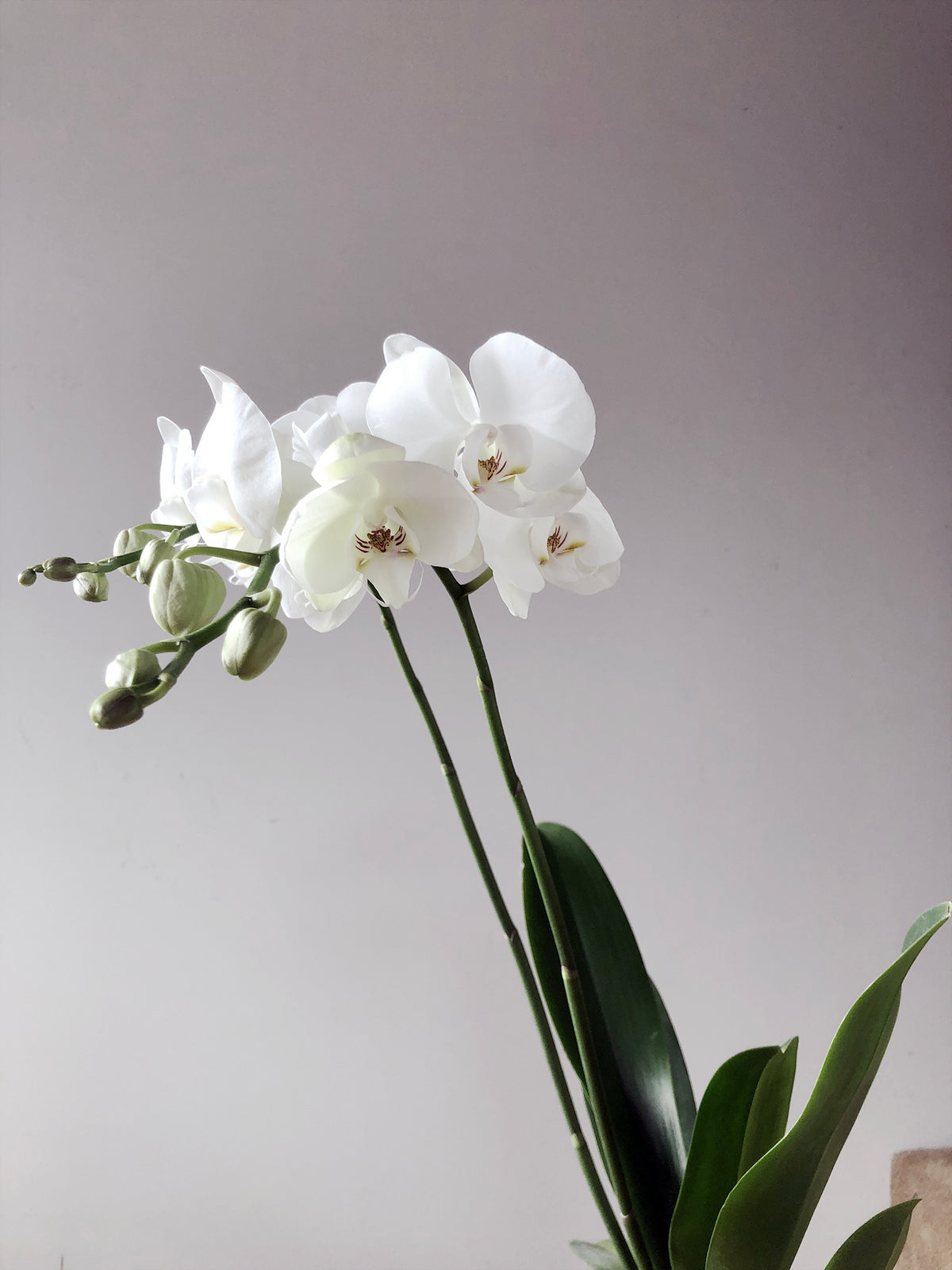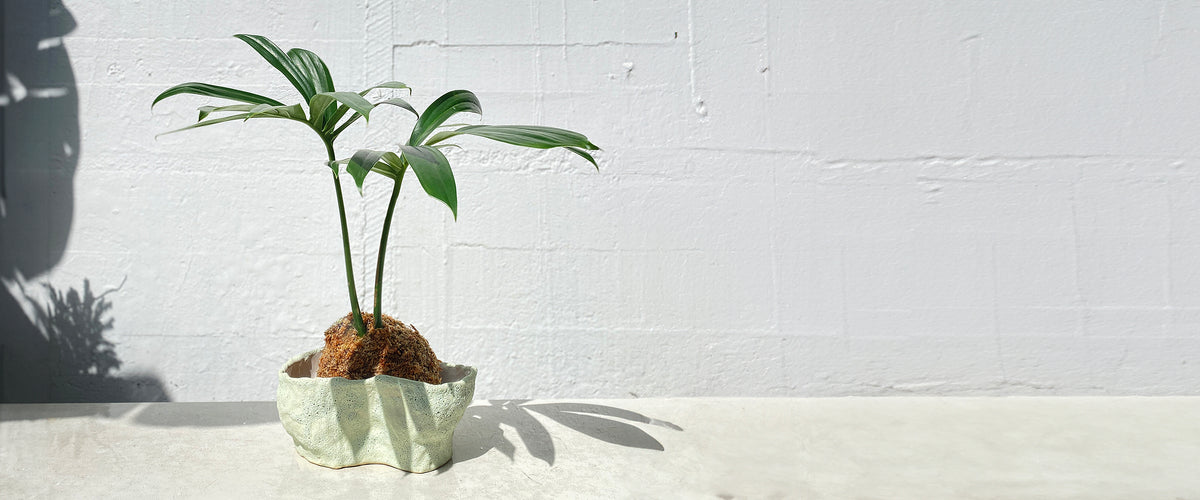Phalaenopsis

Botanical name: Phalaenopsis
Common name: Moth orchid
Plant family: Orchidaceae
About the fascinating orchid…
The Orchid family is one of the most diverse plant families on earth. They are found almost everywhere, from tropical rainforests, to dry and fire prone regions like the Mediterranean and Australia, and even on some subantarctic islands. Did you know vanilla comes from an orchid? There have been over 28,000 species discovered -which for context- is twice the number of bird species, and four times the number of mammal species on the planet. Not included in this count is the 100,000+ hybrids and cultivars produced by horticulturists for house plants since the19th century.
New Zealand has over 160 native orchid species, and most are rather tiny. Keep an eye out for them on your next bush walk, or perhaps even sticking out of a clay bank on the side of the road.
Orchids are fairly easy to identify based on these universal features;
-
Leaves with parallel venation. Orchids fall into the monocot clade, along with all grasses. Like grass, flax and bamboo, the veins on orchid leaves are parallel and run the length of the leaf.
-
Flowers have bilateral symmetry. Most flowers, think daisies, sunflowers, lillies have radial symmetry. If you spin the flower around, there is no specific way up, as the flower has three or more lines of symmetry. Orchids however, tend to be only symmetrical bilaterally. Imagine putting a mirror vertically up to the flower, and reflecting either the left or right side.
Phalaenopsis (aka moth orchids) is a genus containing 92 species native to Southeast Asia. Of these, only 18 are used for breeding, and as of 2018 there were 34,112 hybrids of Phalaenopsis registered in the Royal Horticultural Society. All moth orchids have long-lasting, often sweetly scented flat flowers arranged on a gracefully arching flower stem. They are the most popular orchids in cultivation, no doubt due to the large flowers, easy propagation, and ability to flower under artificial light. A healthy moth orchid can bloom for several weeks, or two-three months if kept inside. With proper care (or neglect), these orchids can flower year after year.
Temperature/sun
Moth orchids like a well-lit, warm position. Keep them out of direct sunlight and drafts, and don’t be tempted to put them right next to a window- this gets quite cold at night.
Growing medium
Orchids do best in poor soil. Use a medium (or blend of) that drains freely, but will hold onto some moisture. Examples include orchid bark, sphagnum moss, fernwood fibre, sand x peat. Repot each spring to keep things fresh.
Watering
As always, this depends on the conditions of your home. Water once the potting medium is mostly dry, usually every 7-10 days. Be careful not to get water on the leaves. We find its best to leave the orchid in a well draining orchid pot and water right through so the orchid is not left sitting in water, the roots can rot if this happens.
Fertilisation
As orchids are grown in nutrient poor mediums, they require frequent feeding. A good guide is to mix up a water soluble orchid specific feed for every second watering. Fertilise less when the orchid is in bloom or not growing, and more when leaves are developing.
Flowering
The whole reason you bought the orchid! Flowering is often triggered by shorter day length, or a drop in daytime temperature, and limited if temperatures exceed 29℃. If kept indoors, bear in mind that the temperature you keep your house at, and length of time the lights are left make up the orchid's environment. Therefore, blooming may not align with the seasons. The large surface area of the flowers can cause the orchid to dry out quicker, so pay attention to watering.
Maintenance
Once flowering has finished, cut the stem at the point where the first flower was. In the right conditions, you should get a branch off the main spike with more flowers.
Propagation
Most phalaenopsis are cloned, or propagated in labs through tissue culture. The at-home propagator may have better luck with a keiki. When an orchid is producing a flower spike, if temperatures increase to 28℃ + for a prolonged time, the buds abort and instead the spike grows a keiki (baby plant). Let the keiki stay on the mother plant for several months, until it has a healthy root system at least 3 inches long. Then carefully cut below and above the stem with a sharp, sterile blade, and plant up.
Diseases
Chilling injury: exposure to temperatures below 10℃ for a few hours or more. Results in yellow, water soaked and sometimes sunken spots on the upper leaf surface.
Rot: Erwinia (bacterial soft rot) and pseudomonas (brown rot) are more prevalent during moist and warm conditions. The best way to avoid rot is to water early in the morning so they are dry at night. Make sure your orchid is in a free draining mix, in a free draining container. Cut any mushy roots and replant into a fresh medium if any sign of rot occur.
Mealybug, scale, thrips, spider mites, slugs and snails: scan your orchid regularly for any sign of these pests. Remove by hand, using a cotton bud to reach the tight areas between the leaves and stem. Spray with bugtrol, or a combination of bugtrol and glow.
Toxicity
Moth orchids are non-toxic to people and pets.
Researched and written by
Jamie Corkill
MEcology
©Babylonstore 2022
References:
Blanchard, M., Lopez, R., Runkle, E. S., & Wang, Y. T. (2007). Growing the Best Phalaenopsis. Orchids, 4, 266-71.
Gaskett, A. (2018). Plant Diversity [Lecture notes].
Griesbach, R. J. (2002). Development of Phalaenopsis orchids for the mass-market. Trends in new crops and new uses. ASHS Press, Alexandria, VA, 458-465.
Hsu, C. C., Chen, H. H., & Chen, W. H. (2018). Phalaenopsis. In Ornamental Crops (pp. 567-625). Springer, Cham.
https://www.aspca.org/pet-care/animal-poison-control/toxic-and-non-toxic-plants/phalaenopsis-orchid
https://www.nativeorchids.co.nz/
https://www.orchidweb.com/phalaenopsis-orchid-care
https://en.wikipedia.org/wiki/Orchidaceae
Orchid cultural notes: Tuckers Orchid Nursery
Runkle, E. R. I. K., Wang, Y. T., Blanchard, M., & Lopez, R. (2007). Growing the best Phalaenopsis. Orchids, 76(1), 24-28.

